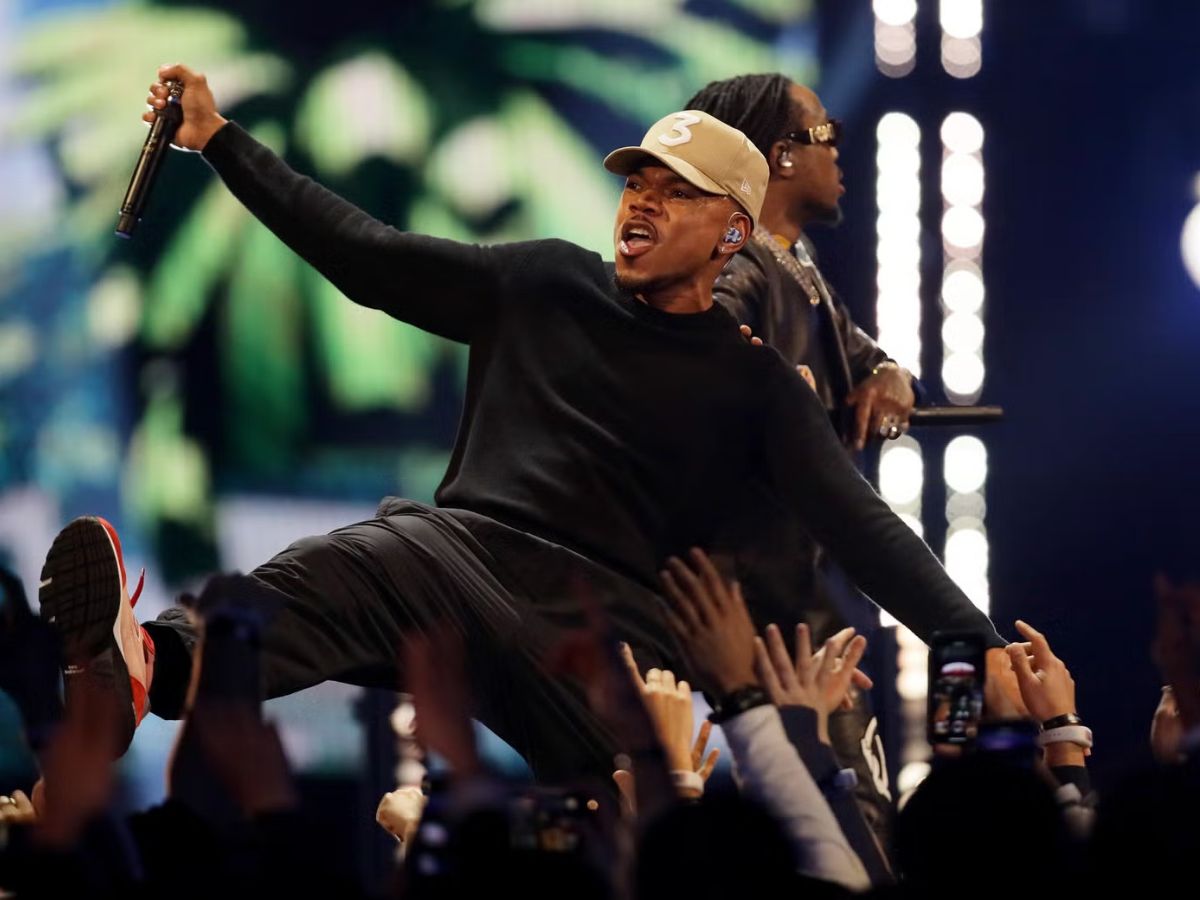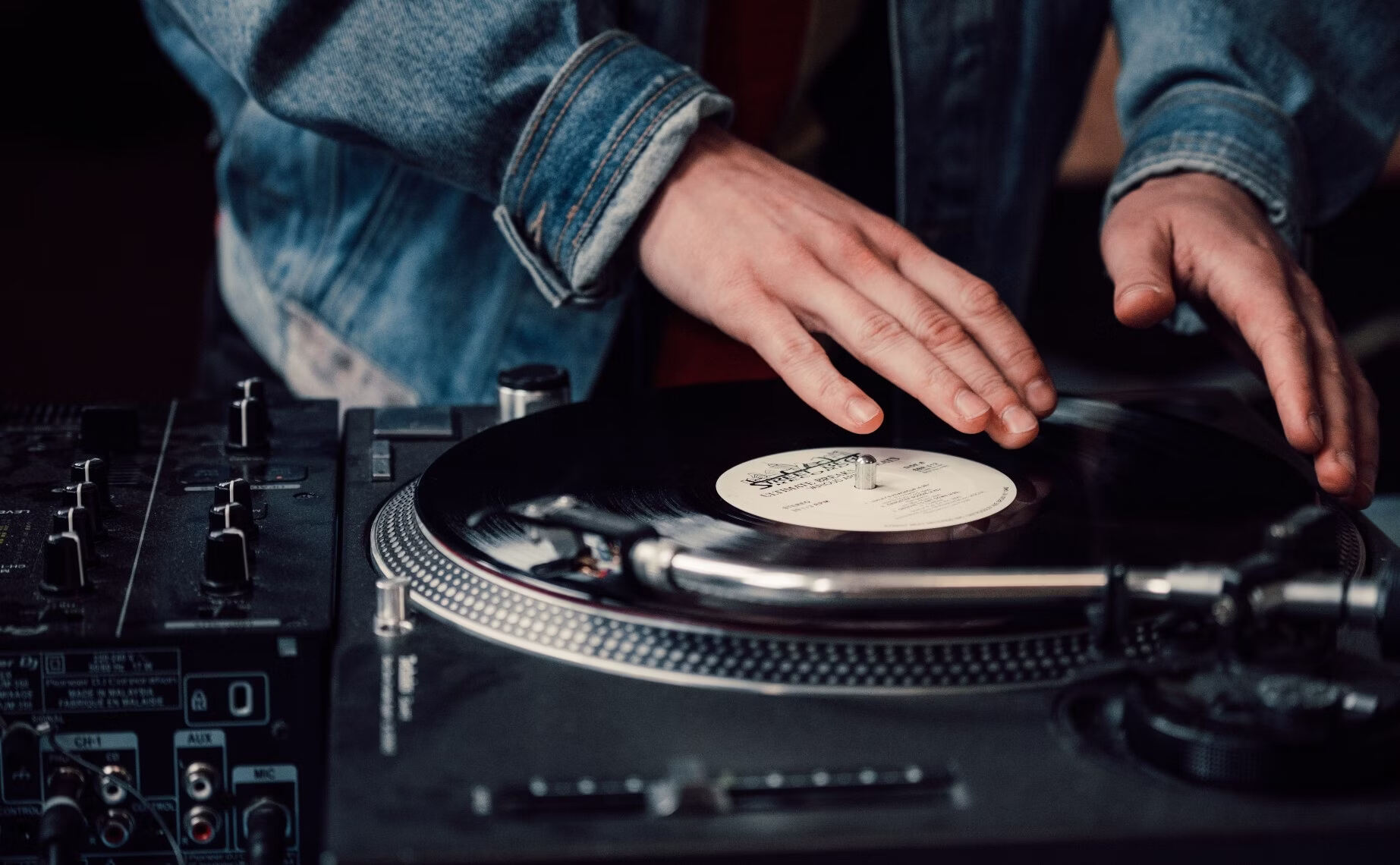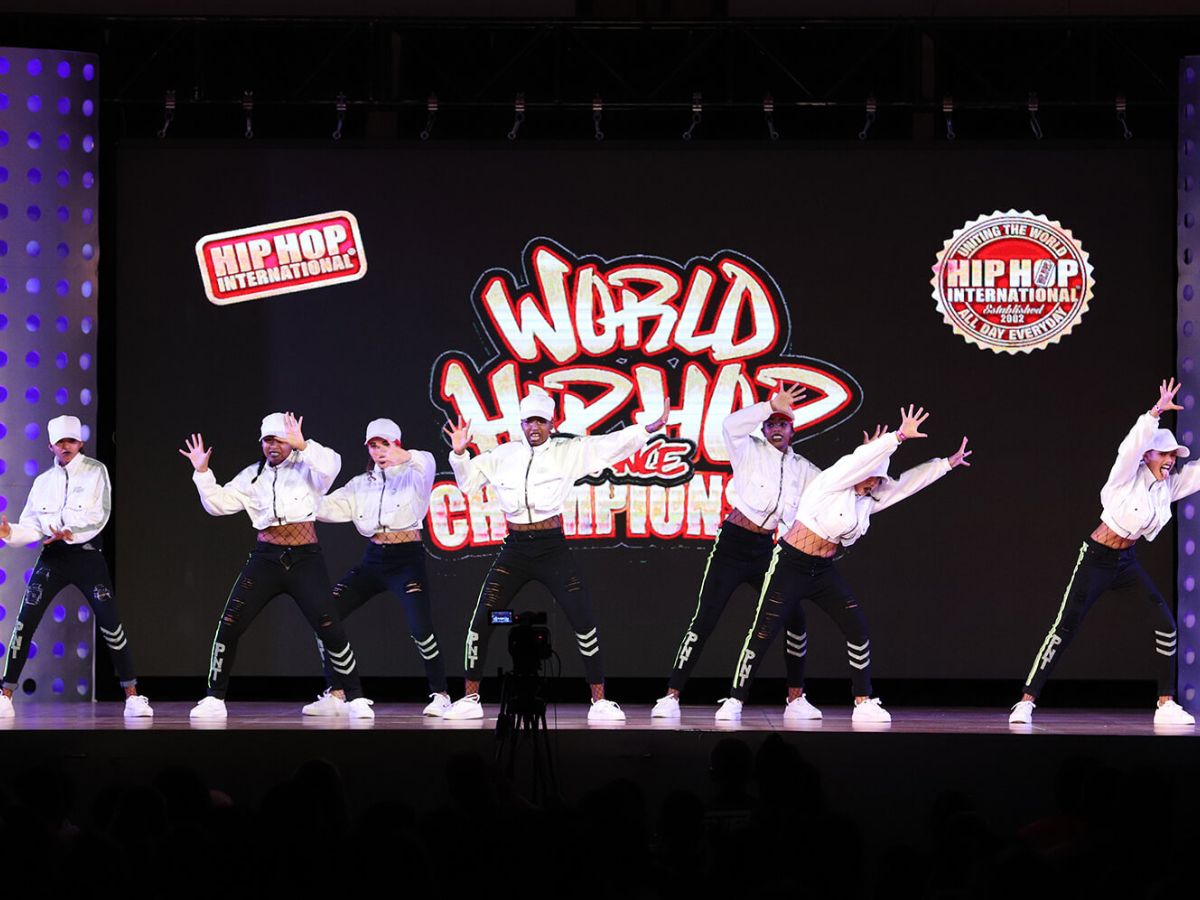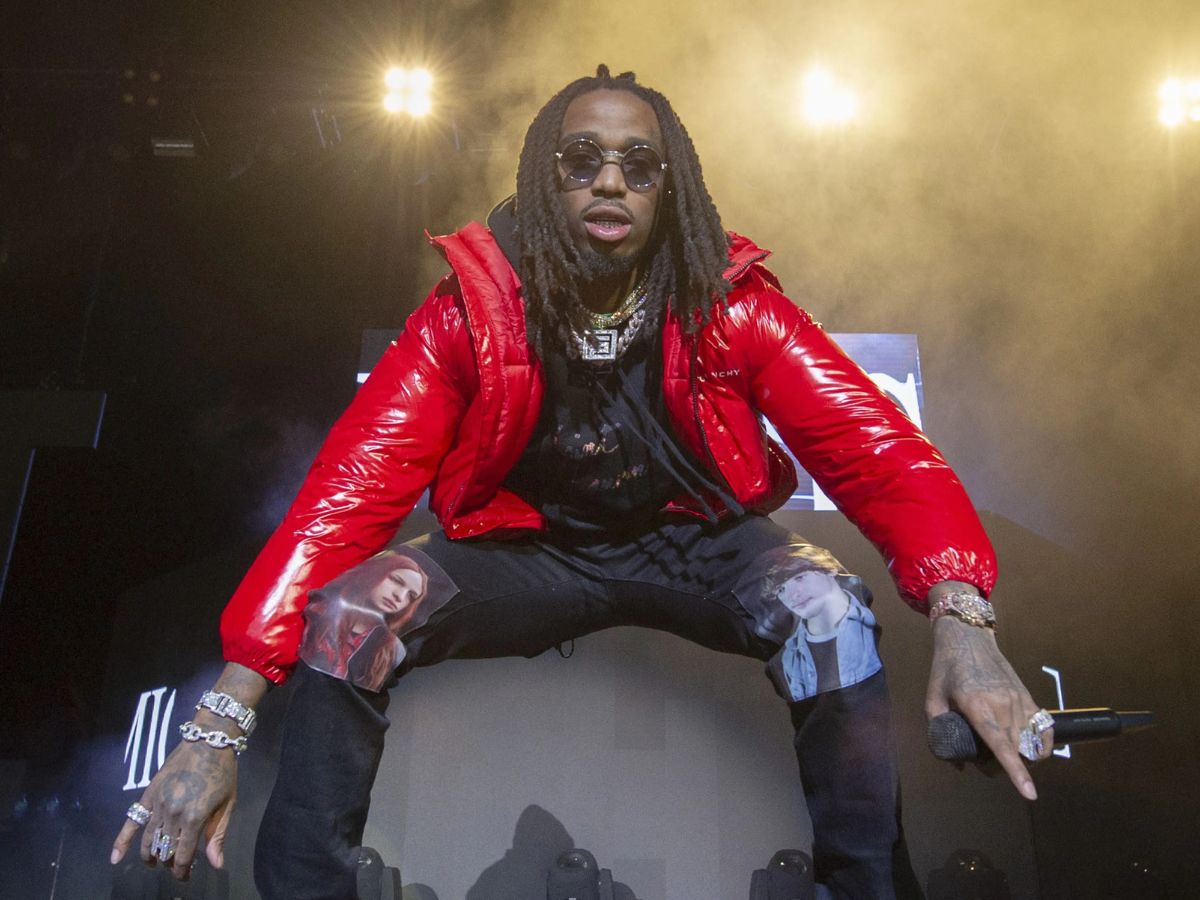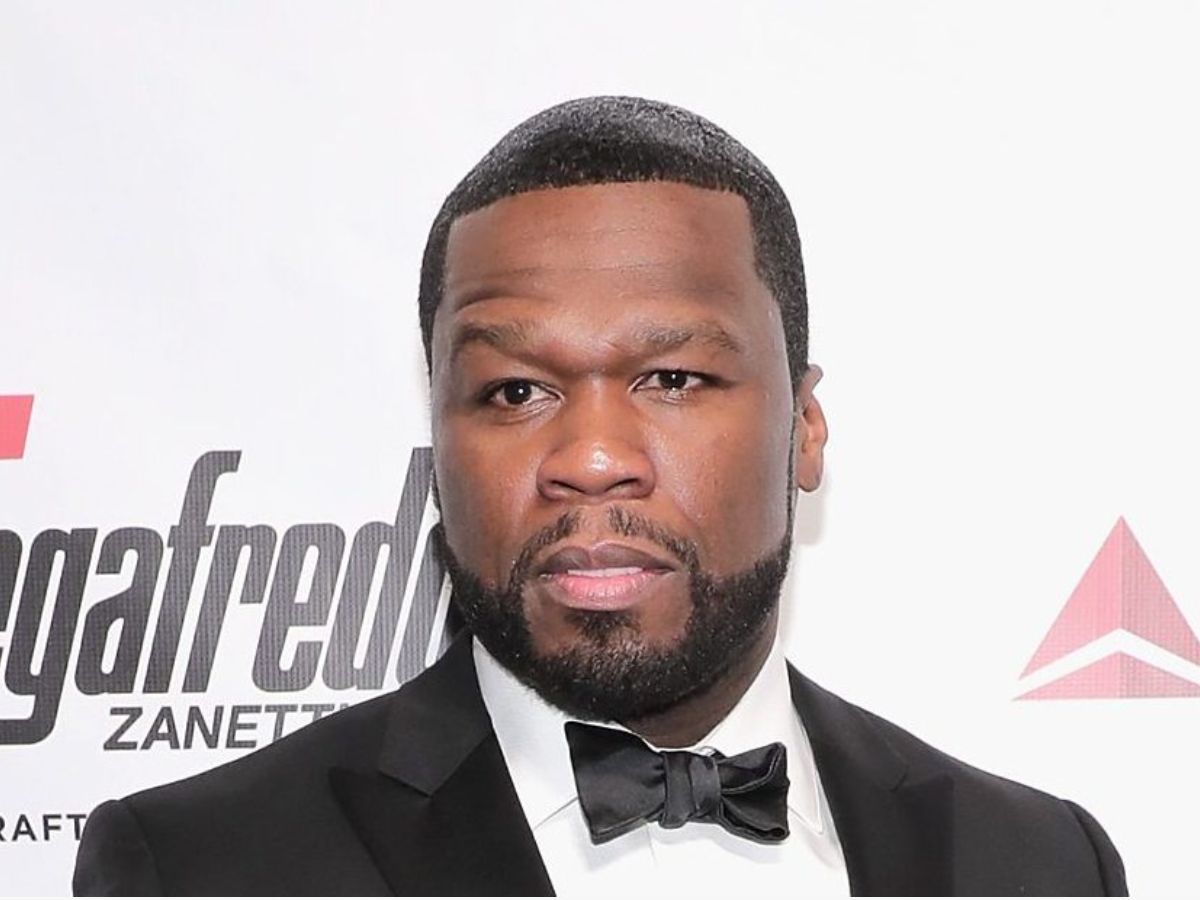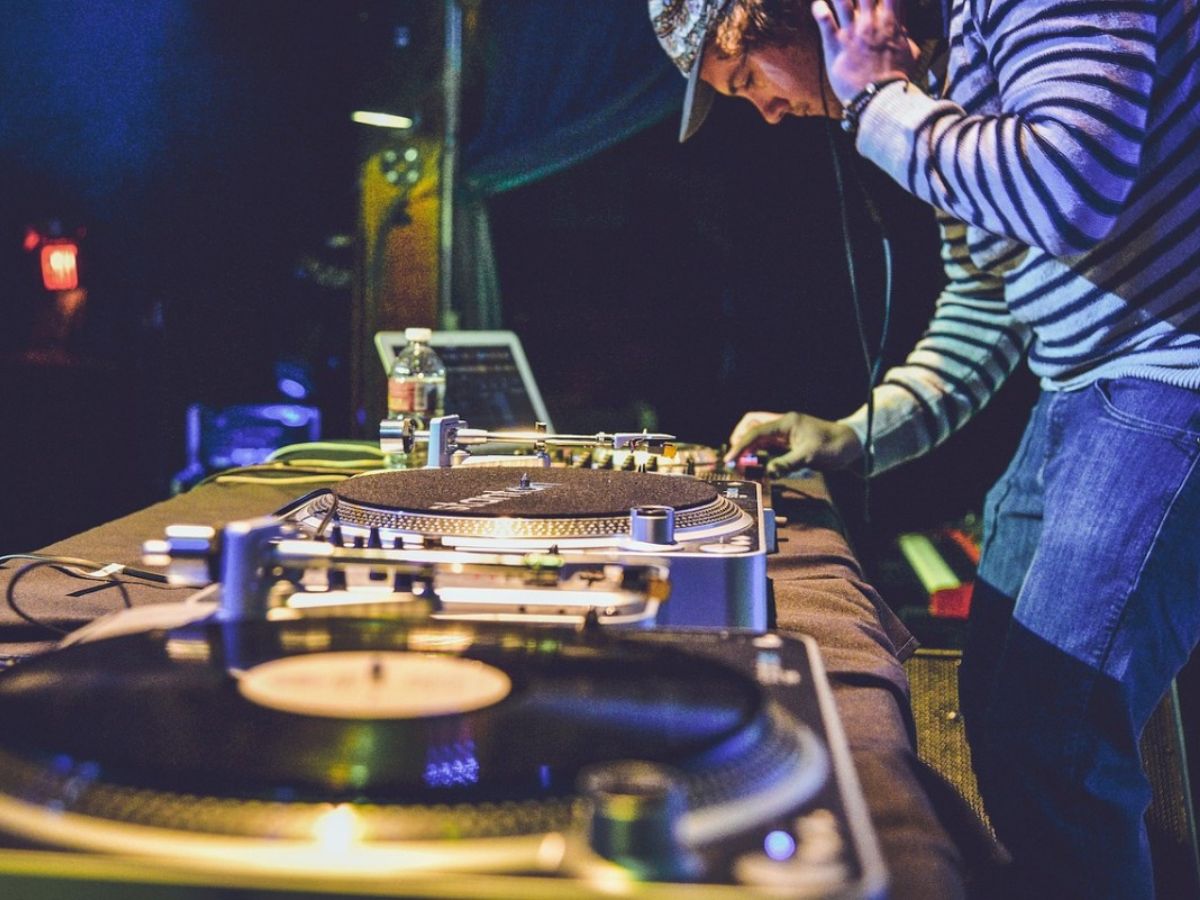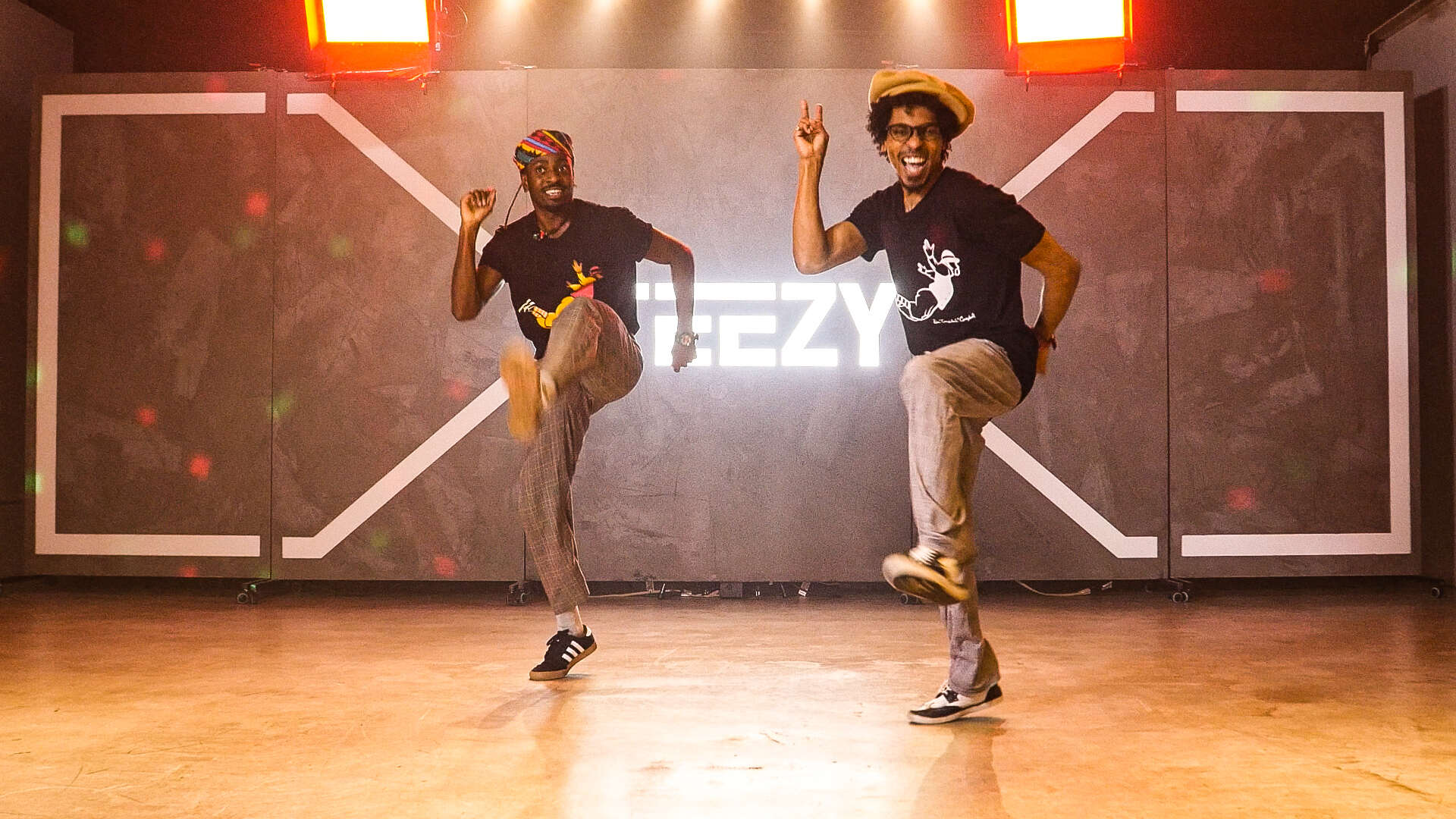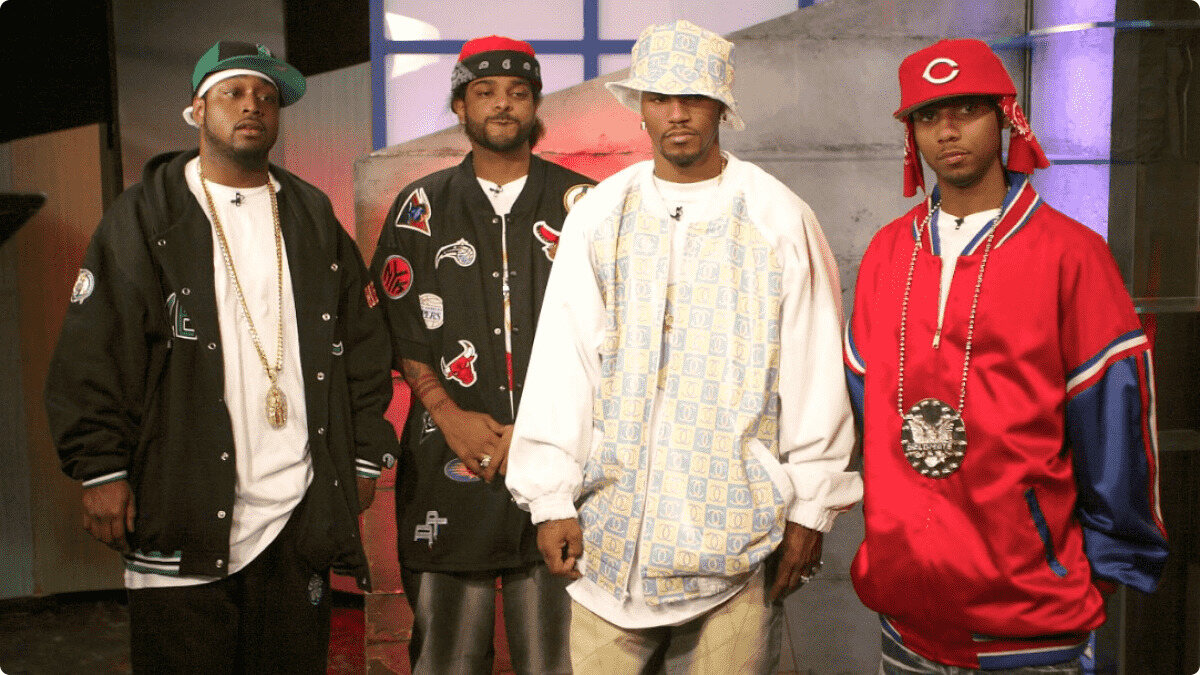

Hip Hop
What Is Hip Hop Fashion
Modified: January 22, 2024
Discover the latest trends and styles in hip hop fashion. From sneakers to oversized hoodies, embrace your inner urban style with our curated collection.
(Many of the links in this article redirect to a specific reviewed product. Your purchase of these products through affiliate links helps to generate commission for AudioLover.com, at no extra cost. Learn more)
Table of Contents
Introduction
Hip Hop is more than just a genre of music; it is a cultural movement that has transcended boundaries and influenced various aspects of society. One of the most notable elements of this cultural phenomenon is Hip Hop fashion. Hip Hop fashion is characterized by its unique style, combining streetwear, urban aesthetics, and a rebellious attitude.
Originating in the late 1970s in the Bronx, New York, Hip Hop fashion was born out of the need for self-expression and identity within the African American and Puerto Rican communities. It served as a form of artistic expression and defiance against the prevailing fashion norms of the time.
In the early years, Hip Hop fashion was influenced by the street culture of New York City, with graffiti art, breakdancing, DJing, and rapping all playing a significant role. The fashion choices of early Hip Hop artists reflected their urban environment, showcasing a mix of baggy clothing, tracksuits, hoodies, and sneakers.
As Hip Hop music started to gain mainstream popularity in the 1980s and 1990s, so too did its associated fashion. Hip Hop fashion became a symbol of empowerment and authenticity, allowing individuals to express their identity and creativity through their clothing choices.
Today, Hip Hop fashion continues to evolve and influence popular culture. It has become a global phenomenon, transcending racial and cultural boundaries. From high-end designer collaborations to streetwear brands, Hip Hop fashion has left an indelible mark on the fashion industry.
In this article, we will explore the origins of Hip Hop fashion, the key elements that define it, the fashion trends within Hip Hop culture, iconic brands associated with it, its evolution, and the impact it has had on mainstream culture. We will also examine some of the challenges and criticisms that Hip Hop fashion has faced.
The Origins of Hip Hop Fashion
Hip Hop fashion can be traced back to the streets of the Bronx in the 1970s. During this time, the youth of African American and Puerto Rican communities sought a way to express their cultural identity and rebel against the established fashion norms.
The early pioneers of Hip Hop fashion embraced a style that was influenced by their urban environment and the cultural elements surrounding them. Baggy clothing, tracksuits, and sneakers became staples of Hip Hop fashion, reflecting the comfort and movement required for dynamic dance styles like breakdancing.
As Hip Hop music started to gain popularity, rap artists and DJs became fashion icons, with their unique style becoming an integral part of their identity. In the 1980s, Adidas tracksuits, Kangol hats, and gold chains were popularized by artists like Run-D.M.C., who brought a fusion of street style and luxury into the Hip Hop fashion scene.
One of the most iconic elements of early Hip Hop fashion was the emergence of “bling” or the flaunting of wealth through accessories. Gold chains, oversized rings, and extravagant watches became symbols of success and status within the Hip Hop community.
Moreover, the influence of sportswear cannot be overlooked in the origins of Hip Hop fashion. Basketball and tennis became sources of inspiration for fashion choices, with basketball jerseys, snapback hats, and high-top sneakers dominating the Hip Hop fashion landscape.
The practice of customizing clothing also played a significant role in the beginnings of Hip Hop fashion. Individuals would add their own unique touches to their clothing, such as embroidery, patches, and graffiti-inspired artwork. This personalization allowed for self-expression and stood as a symbol of individuality.
Overall, the origins of Hip Hop fashion can be attributed to the desire for self-expression, cultural identity, and a rebellion against mainstream fashion norms. It reflects the resilience and creativity of marginalized communities who sought a platform to express themselves and challenge societal expectations.
Influences on Hip Hop Fashion
Hip Hop fashion has been influenced by a variety of factors, including music, art, street culture, and even political movements. These influences have shaped the unique aesthetic and style that is synonymous with Hip Hop fashion. Let’s explore some of the major influences on Hip Hop fashion:
- Music: Hip Hop music itself has had a significant impact on fashion trends within the culture. Artists and their lyrics have often inspired fashion choices, from the iconic tracksuits of Run-D.M.C. to the oversized clothing worn by artists like Aaliyah and TLC. The fusion of music and fashion has been a driving force behind Hip Hop fashion.
- Street Culture: The streets of urban cities, particularly New York City, have heavily influenced Hip Hop fashion. Graffiti, breakdancing, and the vibrancy of street art have provided inspiration for the bold and unconventional styles seen in Hip Hop fashion. The gritty and raw nature of street culture has been integral to the authenticity of Hip Hop fashion.
- African and African American Heritage: The cultural heritage of African and African American communities has had a profound impact on Hip Hop fashion. From traditional patterns and vibrant colors to the celebration of African symbols and African diaspora, these elements have been incorporated into fashion choices, allowing individuals to reconnect with their roots.
- Sportswear: Athletics and the sports industry have heavily influenced Hip Hop fashion. Basketball, in particular, has played a significant role, with basketball jerseys, sneakers, and basketball caps becoming key staples in Hip Hop fashion. The comfort, functionality, and swagger associated with sportswear have seamlessly integrated into the Hip Hop fashion aesthetic.
- Political Movements: Hip Hop fashion has often been intertwined with political and social movements. Artists have used fashion as a form of activism and expression, making statements about societal issues. From wearing apparel emblazoned with political slogans to using fashion as a means of cultural resistance, Hip Hop fashion has been a vehicle for social change.
These influences continue to shape and evolve Hip Hop fashion, ensuring that it remains a dynamic and ever-changing reflection of the culture it represents. It is through the fusion of these various influences that Hip Hop fashion continues to push boundaries, challenge norms, and serve as a platform for self-expression.
Key Elements of Hip Hop Fashion
Hip Hop fashion is characterized by unique elements that set it apart from other fashion styles. These key elements define the aesthetic and attitude of Hip Hop fashion, allowing individuals to express their personal style and cultural identity. Let’s explore the key elements of Hip Hop fashion:
- Streetwear: Streetwear is the foundation of Hip Hop fashion. It encompasses casual, comfortable clothing that is often inspired by both urban and sportswear aesthetics. Baggy jeans, hoodies, graphic t-shirts, and sneakers are all staples of Hip Hop streetwear. The focus is on practicality, comfort, and a cool, relaxed vibe.
- Bold and Vibrant Colors: Hip Hop fashion embraces bold and vibrant colors. Bright shades of red, blue, yellow, and green are commonly seen in clothing choices. This use of vibrant colors adds visual impact and sets Hip Hop fashion apart from more traditional or muted tones.
- Oversized Silhouettes: One of the defining features of Hip Hop fashion is oversized silhouettes. Baggy pants, oversized t-shirts, and loose-fitting jackets are common in Hip Hop fashion. This style has its roots in the comfort and ease of movement necessary for dancing and performing.
- Logo and Branding: Brands and logos play a prominent role in Hip Hop fashion. Artists often showcase their affiliations with particular brands through clothing adorned with logos and slogans. Luxury brands and streetwear labels are frequently incorporated into Hip Hop fashion, creating a mix of high-end and urban aesthetics.
- Accessories: Accessories are an essential part of Hip Hop fashion. Oversized chains, pendants, and medallions are popular among both male and female artists. Hats, especially snapbacks and beanies, are often used to complete the look. Sunglasses, hoop earrings, and watches are also worn to add a touch of glamour and individuality.
- Customization: Customization is a fundamental aspect of Hip Hop fashion. Individuals often personalize their clothing with embroidery, patches, graffiti-inspired artwork, and DIY modifications. This allows for self-expression and makes each outfit unique.
These key elements collectively contribute to the distinctive style of Hip Hop fashion. They reflect the cultural influences, self-expression, and individuality that are at the core of the Hip Hop movement. Hip Hop fashion empowers individuals to embrace their creativity, challenge traditional fashion norms, and make a statement through their clothing choices.
Fashion Trends in Hip Hop Culture
Hip Hop culture has been at the forefront of numerous fashion trends throughout its history. The fashion choices within the Hip Hop community have influenced mainstream fashion, making an indelible impact on trends and styles. Let’s explore some of the notable fashion trends that have emerged from Hip Hop culture:
- Tracksuits: Tracksuits became a symbol of urban fashion in the 1980s, popularized by Hip Hop artists like Run-D.M.C. The iconic Adidas tracksuits, often worn with shell-toe sneakers, represented a fusion of sportswear and street style.
- Basketball Jerseys and Caps: Basketball culture heavily influenced Hip Hop fashion, with basketball jerseys and caps becoming iconic staples. Artists like Tupac Shakur and Allen Iverson played a major role in popularizing the trend, making oversized jerseys and snapback caps a fashion statement.
- Baggy Pants: Baggy pants became synonymous with Hip Hop fashion in the 1990s. The style, inspired by the street culture of New York City, was characterized by loose-fitting jeans or trousers worn low on the hips. This trend allowed for freedom of movement and a casual, carefree aesthetic.
- Athletic Shoes: Sneakers have always been an essential part of Hip Hop fashion. From classic brands like Nike and Adidas to luxury collaborations with high-end designers, athletic shoes are a symbol of status and style within the Hip Hop community. Artists like Kanye West and Travis Scott have even launched their own highly sought-after sneaker collaborations.
- Gold Chains and Jewelry: The flaunting of wealth through gold chains and extravagant jewelry has been a hallmark of Hip Hop fashion. Artists like Notorious B.I.G. and Jay-Z popularized the trend, making gold chains a symbol of success and status within the culture.
- Logo Culture: The embrace of logos and branding within Hip Hop fashion has been influential. Artists often showcase their affiliations with luxury brands through clothing adorned with prominent logos. This trend has led to collaborations between Hip Hop artists and fashion houses, elevating the style and visibility of both.
- High-End Streetwear: The convergence of streetwear and high-end fashion has become a defining trend within Hip Hop culture. Luxury streetwear brands like Off-White, Supreme, and Fear of God have gained immense popularity, combining urban aesthetics with high-quality craftsmanship and exclusivity.
These fashion trends within Hip Hop culture have not only shaped the style of the community but have had a lasting impact on mainstream fashion. The boldness, individuality, and fusion of street and luxury aesthetics continue to inspire designers, brands, and fashion enthusiasts around the world.
Iconic Brands in Hip Hop Fashion
Throughout the history of Hip Hop fashion, several brands have become iconic within the community. These brands have played a significant role in shaping the aesthetic and style of Hip Hop culture. Let’s explore some of the most influential and iconic brands in Hip Hop fashion:
- Adidas: Adidas is arguably one of the most iconic brands in Hip Hop fashion. In the 1980s, the brand gained massive popularity through its collaborations with Hip Hop artists, most notably Run-D.M.C. Their iconic Adidas tracksuits and shell-toe sneakers became synonymous with street style and Hip Hop culture.
- Nike: Nike has had a major impact on the sneaker culture within Hip Hop fashion. Its Air Jordan line, endorsed by basketball legend Michael Jordan, became a coveted item within the community. Nike’s collaborations with Hip Hop artists and designers have also been highly influential in shaping the sneaker trends within the culture.
- Puma: Puma has made its mark in Hip Hop fashion through collaborations with artists like Jay-Z and Rihanna. The brand’s classic sneakers and athletic wear have become popular choices within the Hip Hop community, characterized by their sleek design and iconic logo.
- Gucci: Gucci’s association with Hip Hop fashion dates back to the 1980s when artists started incorporating the brand into their style. In recent years, Gucci has experienced a resurgence in popularity within Hip Hop, with artists like Gucci Mane and Offset frequently showcasing the brand’s luxury clothing and accessories.
- Supreme: Supreme has gained a cult-like following within the Hip Hop community. Known for its limited-edition drops and collaborations with influential artists, the brand has become a symbol of streetwear and exclusivity. Artists like Tyler, The Creator and A$AP Rocky have heavily endorsed and worn Supreme in their music videos and public appearances.
- Off-White: Off-White, founded by designer Virgil Abloh, has become a staple brand in Hip Hop fashion. Known for its distinctive graphic prints and industrial-inspired designs, Off-White has collaborated with numerous Hip Hop artists and has become a go-to choice for those seeking a blend of high-end and streetwear aesthetics.
- Fear of God: Fear of God, created by designer Jerry Lorenzo, has gained prominence in Hip Hop fashion for its elevated take on streetwear. The brand’s oversized silhouettes, premium fabrics, and attention to detail have made it a favorite among artists like Kanye West and Kendrick Lamar.
These iconic brands have left an indelible mark on Hip Hop fashion, shaping trends and influencing style choices within the community. They represent a fusion of streetwear and luxury, reflecting the vibrancy, individuality, and exclusivity that define Hip Hop fashion.
Evolution of Hip Hop Fashion
Hip Hop fashion has evolved significantly since its inception, reflecting the changing cultural landscape and embracing new trends and influences. The evolution of Hip Hop fashion is a testament to its adaptability and ability to stay relevant. Let’s explore the different stages in the evolution of Hip Hop fashion:
1980s – The Birth of Hip Hop Fashion: In the early years, Hip Hop fashion was characterized by its raw and rebellious style. Artists like Run-D.M.C. popularized tracksuits, Adidas sneakers, and Kangol hats, showcasing a combination of streetwear and sportswear aesthetics.
1990s – Golden Era of Hip Hop Fashion: The 1990s saw the rise of baggy clothing, oversized jerseys, and sagging pants. Artists like Tupac Shakur and The Notorious B.I.G. influenced the fashion choices of millions, with their iconic bandanas, gold chains, and Timberland boots. This era was also marked by the emergence of luxury brands like Gucci and Versace within Hip Hop fashion.
2000s – Bling and Glamour: The 2000s witnessed a shift towards a more glamorous and ostentatious aesthetic in Hip Hop fashion. Artists like Jay-Z and Lil’ Kim embraced a “bling” culture, sporting diamond-encrusted jewelry, designer labels, and flashy accessories. This era also saw the rise of streetwear brands like Sean John and Rocawear.
2010s – Streetwear and High-End Collaborations: The 2010s marked a convergence of streetwear and high-end fashion within Hip Hop culture. Artists like Kanye West and Pharrell Williams collaborated with luxury brands like Louis Vuitton and Adidas, bringing high-end fashion to the forefront of Hip Hop fashion. Streetwear brands such as Supreme, Off-White, and Fear of God gained immense popularity, catering to the demand for exclusive and limited-edition releases.
Present Day – Eclectic and Individualistic: In recent years, Hip Hop fashion has embraced an eclectic and individualistic approach. Artists are exploring diverse styles, merging traditional streetwear with elements of high fashion, vintage clothing, and DIY customization. This era is characterized by a celebration of uniqueness and authenticity, with artists like Tyler, The Creator and Jaden Smith pushing boundaries and challenging conventional fashion norms.
The evolution of Hip Hop fashion has demonstrated its ability to adapt, innovate, and redefine itself, constantly pushing boundaries and setting new trends. From its humble beginnings in the streets of the Bronx to its global influence, Hip Hop fashion continues to be a powerful force within the fashion industry, reflecting the spirit and cultural significance of the Hip Hop movement.
Impact of Hip Hop Fashion on Mainstream Culture
Hip Hop fashion has had a profound impact on mainstream culture, transcending its origins as a subculture and influencing fashion trends on a global scale. From the streets of the Bronx to the runways of high fashion, Hip Hop fashion has left an indelible mark. Let’s explore the impact of Hip Hop fashion on mainstream culture:
Innovation and Creativity: Hip Hop fashion is known for its innovation and creativity. It has pushed boundaries, challenged traditional fashion norms, and brought new and unconventional styles to the forefront. The bold and fearless approach to fashion within Hip Hop culture has inspired mainstream designers and brands to take risks and experiment with bolder aesthetics.
Streetwear Dominance: Hip Hop fashion played a pivotal role in elevating streetwear to mainstream prominence. What was once considered underground or niche has now become a dominant force within the fashion industry. Streetwear brands, influenced by Hip Hop fashion, have gained a loyal following and have even collaborated with high-end fashion houses, breaking down the barriers between street and luxury fashion.
Cultural Appropriation and Influence: Hip Hop fashion has been both celebrated and criticized for its influence on cultural appropriation. Mainstream fashion has often borrowed elements from Hip Hop culture without proper recognition or understanding of its roots. However, this also highlights the immense impact that Hip Hop fashion has had on shaping mainstream fashion trends and aesthetics.
Diversity and Inclusivity: Hip Hop fashion has been instrumental in promoting diversity and inclusivity within the fashion industry. It has celebrated various body types, cultures, and styles that were previously ignored by mainstream fashion. The embrace of streetwear and the fusion of different influences have created a more inclusive and representative fashion landscape.
Breaking Fashion Barriers: Hip Hop fashion has challenged conventional notions of style and beauty, breaking down traditional fashion barriers. It has challenged the idea that high fashion is synonymous with exclusivity and luxury, showing that style can be found in everyday streetwear. This shift has given rise to a greater appreciation for individuality and a rejection of societal fashion standards.
Global Influence: Hip Hop fashion has transcended borders and cultural boundaries, becoming a global phenomenon. From the streets of New York to the fashion capitals of Paris and Tokyo, the influence of Hip Hop fashion can be seen in street style, music, and popular culture worldwide.
Overall, Hip Hop fashion’s impact on mainstream culture cannot be overstated. It has paved the way for new trends, challenged fashion norms, and promoted inclusivity and individuality. Hip Hop fashion continues to be a driving force within the fashion industry, shaping the way we perceive and engage with style.
Challenges and Criticisms of Hip Hop Fashion
While Hip Hop fashion has undeniably had a significant impact on the fashion industry and popular culture, it has also faced its fair share of challenges and criticisms. Let’s explore some of the key challenges and criticisms of Hip Hop fashion:
Cultural Appropriation: One of the main criticisms of Hip Hop fashion is its appropriation by mainstream culture without proper recognition or respect for its origins. Many argue that elements of Hip Hop fashion, such as sagging pants or certain hairstyles, have been adopted and commodified by the mainstream fashion industry without understanding or honoring their cultural significance.
Gender Stereotypes: Hip Hop fashion has often been associated with hypermasculinity, perpetuating gender stereotypes within the community. The emphasis on baggy clothing, oversized jewelry, and macho aesthetics has limited the representation of diverse gender identities within Hip Hop fashion.
Consumerism and Materialism: Hip Hop fashion has been criticized for perpetuating a culture of excessive consumerism and materialism. The emphasis on branded clothing, expensive jewelry, and luxury accessories has sometimes overshadowed the cultural and artistic values that Hip Hop was originally founded upon. This focus on material wealth can reinforce negative stereotypes and unrealistic ideals.
Lack of Sustainability: The fast fashion culture associated with Hip Hop fashion has led to concerns about its environmental impact. The constant demand for new and trendy clothing, combined with the disposable nature of many streetwear brands, contributes to the harmful effects of the fashion industry on the environment.
Reinforcement of Negative Images: Some critics argue that certain elements of Hip Hop fashion perpetuate negative stereotypes, such as the glorification of violence, drug use, and criminality. The association of certain fashion choices with criminal or gang culture can reinforce harmful narratives that misrepresent the Hip Hop community.
Lack of Diversity in Representation: While Hip Hop fashion has celebrated diversity and inclusivity, there is still a lack of representation in terms of size, race, and gender within the industry. The dominance of certain body types and limited representation of marginalized communities remains an issue yet to be fully addressed.
Authenticity vs. Commercialization: The tension between authenticity and commercialization in Hip Hop fashion is a constant challenge. As the culture becomes more mainstream, there is a concern that Hip Hop fashion risks losing its original spirit and becoming a watered-down version of itself, pandering to commercial interests rather than maintaining its roots of self-expression and rebellion.
Recognizing and addressing these challenges and criticisms is crucial for the continued growth and evolution of Hip Hop fashion. By promoting authenticity, diversity, sustainability, and respect for its cultural origins, Hip Hop fashion can navigate these issues and continue to make a positive impact in the fashion industry and society as a whole.
Conclusion
Hip Hop fashion has emerged as a powerful cultural force that has left an indelible impact on the fashion industry and mainstream culture. From its humble beginnings in the streets of the Bronx to its global influence, Hip Hop fashion has evolved, adapted, and redefined itself over the years.
Rooted in the need for self-expression, identity, and rebellion, Hip Hop fashion has broken down fashion barriers and challenged conventional norms. It has celebrated diversity, promoted inclusivity, and empowered individuals to embrace their individuality through their clothing choices.
Hip Hop fashion has shaped trends in streetwear, influenced luxury brands, and elevated the significance of sportswear within the fashion landscape. It has inspired collaborations between designers and artists, brought high fashion to the streets, and blurred the lines between streetwear and luxury.
Despite its tremendous impact, Hip Hop fashion is not without its challenges and criticisms. Cultural appropriation, gender stereotypes, consumerism, and lack of sustainability are among the issues that the industry must address to ensure its continued growth and authenticity.
Nevertheless, Hip Hop fashion’s enduring influence cannot be denied. It has provided a platform for self-expression, celebrated cultural heritage, and empowered marginalized communities. Through its vibrant styles, unique elements, and fusion of influences, Hip Hop fashion continues to shape mainstream fashion and define the cultural zeitgeist.
As the world evolves and fashion trends come and go, Hip Hop fashion remains a powerful testament to the resilience, creativity, and cultural impact of the Hip Hop movement. It represents a voice, a rebellion, and a celebration of individuality that continues to inspire and captivate audiences across the globe.

